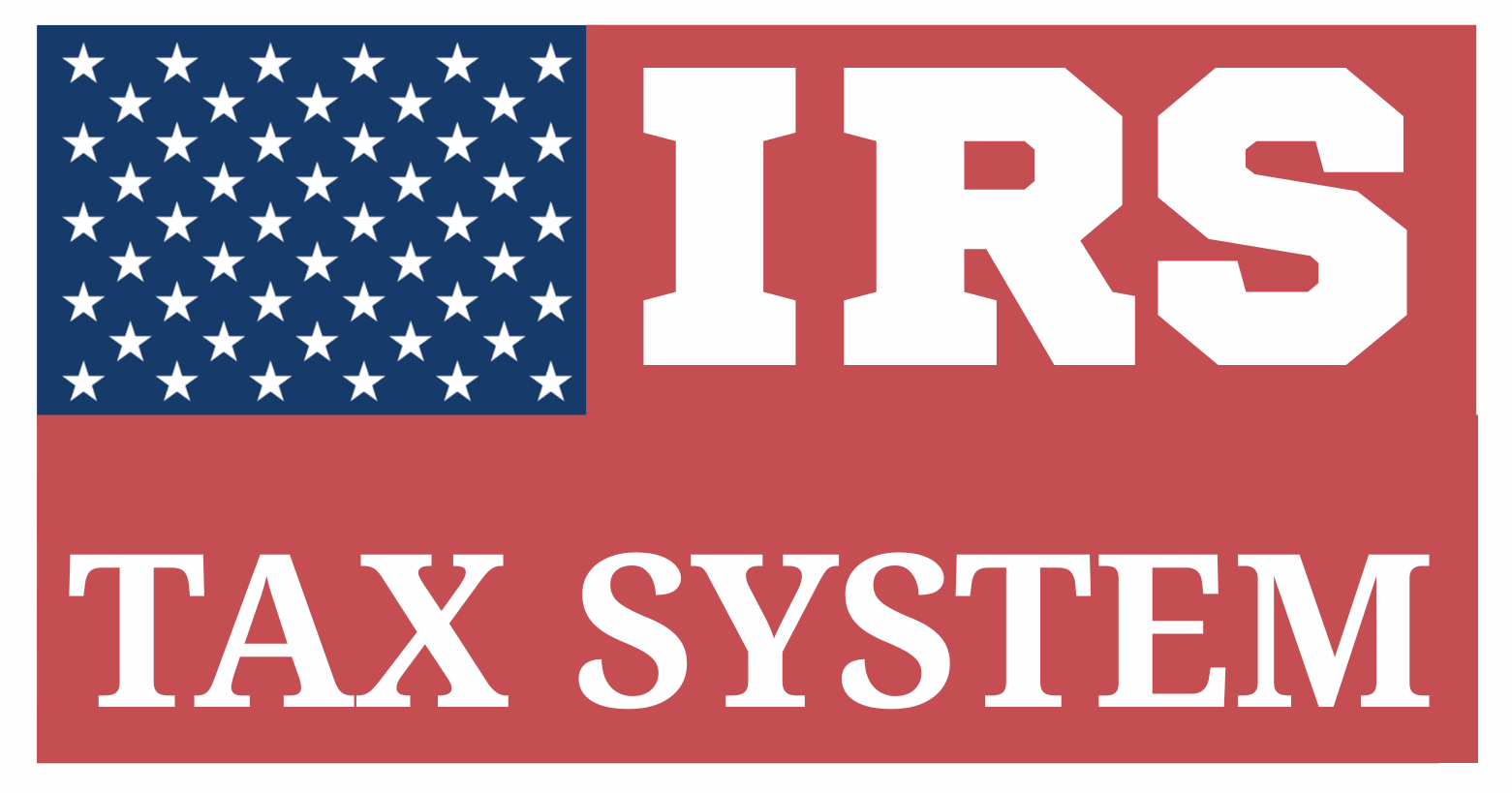Waterfall Allocations: Top Overview By An Expert In 2025
Table of Contents
What Is Waterfall Allocations?- A Must Read Guide

Waterfall allocations is a structured method for distributing profits among participants in an investment partnership, such as private equity, real estate syndications, and venture capital funds. The distribution occurs in tiers or “levels,” and each level must be fully satisfied before profits move to the next level—much like how water cascades down steps in a waterfall.
This model outlines who gets paid first, how much they receive, and how profits are split between investors (limited partners or LPs) and fund sponsors (general partners or GPs).
Importance of Waterfall Allocation
Waterfall allocation plays a critical role in shaping the financial structure of investment partnerships, especially in private equity, real estate funds, and venture capital. Its significance extends beyond just profit sharing—it defines the economic relationship between investors (Limited Partners or LPs) and fund managers (General Partners or GPs), aligning interests and promoting transparency.
1. Capital Protection and Prioritization
Waterfall structures ensure that investors recover their capital before profits are distributed, safeguarding their principal investment. This tiered system prioritizes risk protection for LPs.
Example
If a real estate fund earns $5 million and LPs contributed $3 million, the first $3 million in returns go directly to LPs before any profits are shared with the GP.
2. Alignment of Interests
By rewarding GPs only after achieving specific returns (like a preferred return or IRR hurdle), waterfall allocations align the financial incentives of GPs and LPs. This motivates GPs to focus on performance and return maximization.
Key Point
GPs typically receive carried interest only if they generate profits exceeding the preferred return—ensuring LPs are paid first.
3. Performance-Based Compensation
Carried interest—the GP’s share of profits—is contingent on fund success, incentivizing long-term strategic growth. This “pay-for-performance” model reduces moral hazard.
Example
A GP may receive 20% of profits only after investors receive an 8% annual return on their capital.
4. Transparency and Predictability
In partnership waterfall provisions are laid out, providing a transparent and remarkable procedure for distributions. This eliminates ambiguity and builds trust between investors and fund managers.
Why It Matters
Investors know exactly when and how they will receive returns—enhancing confidence and facilitating capital raising.
5. Dispute Prevention
By defining the exact sequence of payouts, waterfall allocations reduce the chances of disputes and litigation. A clearly drafted waterfall clause acts as a contractual safeguard.
Best Practice
Include detailed waterfall terms in the Limited Partnership Agreement (LPA), with illustrative examples.
6. Adaptability Across Structures
Waterfall allocation models can be customized based on fund goals and risk appetite—whether deal-by-deal (American-style) or whole-fund (European-style)—making it a versatile tool across investment strategies.
Flexibility
A fund can adopt an aggressive GP incentive model or a conservative investor-first approach, depending on the investor base.
Waterfall allocation is more than a profit-sharing mechanism—it’s a strategic tool that governs capital flow, reinforces investor trust, motivates fund managers, and reduces the likelihood of conflicts. An effectively designed waterfall structure is key to operational integrity and fund success.
Key Components of a Waterfall Structure
A waterfall structure governs how cash distributions from an investment fund (such as private equity, real estate syndications, or venture capital) are allocated among the Limited Partners (LPs) and the General Partner (GP). It’s called a “waterfall” because funds are distributed through a series of steps or tiers, where each level must be fully satisfied before moving to the next.
Understanding each component is essential to ensuring transparency, fairness, and investor alignment in fund operations.
1. Return of Capital (ROC)
Definition
The first priority in any waterfall is to return the original capital invested by the LPs. There is no distribution of profits or interest until LPs recover their full amount of initial investment.
Purpose
To protect investor capital by making capital return the top priority.
Example
- LPs invested: $2,000,000
- Fund generated: $3,000,000
- First $2,000,000 is returned to LPs before any other distributions.
2. Preferred Return (Hurdle Rate)
Definition
A specified minimum rate of return (usually 6%–10% annually) that LPs are entitled to on their contributed capital before the GP receives any profit participation.
Purpose
To compensate LPs for the time value of money and risk.
Types
- Hard Hurdle: LPs must receive the full preferred return before the GP receives any carried interest.
- Soft Hurdle: Once the hurdle is met, profits are shared from the first dollar above the hurdle.
Example
- LP contribution: $1,000,000
- Preferred return: 8%
- LPs receive $80,000 annually before the GP earns carried interest.
3. Catch-Up Provision
Definition
This clause allows the GP to receive a greater share of profits after the preferred return is paid to LPs, until the agreed-upon profit-sharing ratio (e.g., 80/20) is achieved.
Purpose
To ensure the GP receives their fair portion of profits after LPs have been made whole on preferred returns.
Example
- After LPs receive an 8% preferred return, the next $200,000 of profit may go 100% to the GP (catch-up).
- Once the catch-up is complete, the remaining profits are split according to the agreed ratio.
4. Carried Interest (Promote)
Definition
The GP’s profit share after the LPs have received their return of capital and preferred return. This is usually 20%, while LPs receive the remaining 80%.
Purpose
To incentivize fund performance—GPs earn more if the fund does well.
Example
- Remaining profit: $1,000,000
- GP receives 20% = $200,000
- LPs receive 80% = $800,000
5. Clawback Provision
Definition
A clause that requires the GP to return excess carried interest if, at the end of the fund, LPs have not received their expected returns.
Purpose
To protect LPs from overpayment and ensure GP compensation aligns with final fund performance.
Example
- $500,000 in carried interest during early distributions received by General partners
- Final returns fall short of hurdle rate.
- GP is required to return $100,000 to LPs.
6. Distribution Waterfall Tiers
Waterfall structures are typically organized into four tiers:
| Tier | Description |
| Tier 1: ROC | LPs receive their original capital. |
| Tier 2: Preferred | Limited partners are paid their preferred return, typically around 8%. |
| Tier 3: Catch-Up | General partners receive all subsequent profits until their agreed share of the total returns is reached. |
| Tier 4: Carried Int | Remaining profits split (typically 80/20 LP/GP). |
Each tier builds upon the previous, creating a transparent and fair distribution methodology.
7. Hurdle Rate Types
Different funds use different benchmark return levels:
- Fixed Hurdle: A specific percentage (e.g., 8% IRR).
- Variable Hurdle: Adjusts based on risk or performance factors.
- Multiple Tiers: Some funds use multiple hurdle rates (e.g., 8% and 12%), with higher GP carry at higher performance levels.
Example
- 8% hurdle → 20% carried interest
- 12% hurdle → 30% carried interest
8. Distribution Methods
The method of distribution affects the speed and risk of GP payouts:
- Deal-by-Deal (American Style): Profits are distributed as each deal closes.
- Whole-Fund (European Style): Profits are distributed only after the fund as a whole returns capital and hurdle returns.
9. IRR-Based Thresholds
Some waterfalls use Internal Rate of Return (IRR) calculations to measure whether hurdles are met.
Example
If the LP is promised a 10% IRR, the distribution schedule is triggered only when that internal rate of return is reached over time.
Summary
Each of these components contributes to a fair, performance-driven profit distribution system that aligns the interests of investors and fund managers. A well-designed waterfall:
- Encourages fund manager performance
- Protects investor capital
- Clearly defines entitlement at every level
Before structuring or entering a fund, stakeholders should review the Limited Partnership Agreement (LPA), where all waterfall provisions are legally documented.
Common Structures in Waterfall Allocation
Waterfall allocation structures define how profits are distributed among participants in an investment fund. The structure chosen impacts the timing and size of payouts to Limited Partners (LPs) and General Partners (GPs), shaping fund economics and investor incentives. Most investment funds adopt either a Deal-by-Deal (American-style) or Whole-Fund (European-style) structure—though hybrids and customized models also exist.
1. Deal-by-Deal (American-Style) Waterfall
This model distributes profits per individual investment, not at the overall fund level. After each asset is sold or generates profit, the proceeds are allocated in tiers.
Key Features
- GPs may receive carried interest once each investment achieves its preferred return.
- Capital from successful investments can trigger GP rewards—even if other investments perform poorly.
Pros
- Faster GP payouts.
- Attractive for sponsors with strong deal flow.
Cons
- Higher risk for LPs, since losses from other deals may not be netted against GP compensation.
- Potential mismatch of interest alignment if some deals underperform.
Example
In a fund with three deals, the GP could receive carried interest from Deal 1 even if Deal 2 results in a loss.
2. Whole-Fund (European-Style) Waterfall
This approach distributes profits only after the entire fund’s capital is returned and LPs have received their preferred return on the total committed capital.
Key Features
- Limited partners must be fully repaid across all investments before general partners are entitled to any share of the profits.
- Stronger LP protection and more equitable outcomes.
Pros
- Better alignment between LPs and GPs.
- Reduces risk of GP overcompensation in early wins.
Cons
- Delayed compensation for GPs, often until late in the fund lifecycle.
- May disincentivize fund managers without robust deal performance.
Example
GPs won’t earn carried interest until the entire fund portfolio produces net positive returns above the preferred hurdle (e.g., 8%).
3. Tiered or Multi-Level Waterfall
This structure introduces multiple tiers, each with a different profit-splitting arrangement. It’s commonly used in both American and European styles.
Common Tiers
- Return of Capital: Limited partners gets 100% of their contributed capital.
- Preferred Return: LPs receives a fixed annual return (usually at a rate of 6–10%).
- Catch-Up Tier: GPs receive 100% of profits until the agreed profit-sharing ratio is achieved.
- Carried Interest Split: Profits get divided (e.g., 80/20 or 70/30 ratios) between LPs and General partners
Example
After an 8% preferred return, the next $200,000 may go entirely to the GP (catch-up), then remaining profits split 80% LP / 20% GP.
4. Clawback Provisions (Fund-Level Adjustment)
Clawback clauses ensure GPs don’t retain excess carried interest if later losses reduce overall fund performance below the threshold.
How It Works
- If carried interest is distributed early and the fund subsequently underperforms, general partners are obligated to repay any overpaid amounts.
- Protects LPs from over-distribution.
Example
A GP receives $1M in carry, but total fund returns fall below the hurdle. A clawback clause would require part of the $1M to be repaid.
5. Preferred Equity with IRR Hurdles
Some funds incorporate Internal Rate of Return (IRR) hurdles, requiring a specific rate of return before GPs receive carried interest.
IRR-Based Tiers
- Soft Hurdle: Soft Hurdle: Once the preferred return is achieved, general partners start receiving carried interest without first making up for the limited partners’ entire capital.
- Hard Hurdle: All profits beyond the hurdle are shared from the first dollar after the threshold is exceeded.
Typical Hurdle Rate: 8–10% IRR for LPs before profit sharing.
6. Waterfalls with Catch-Up Adjustments
Catch-up provisions allow general partners to receive additional profits after limited partners have received their preferred return, aligning distributions with the agreed carried interest percentage.
Structures
- Full Catch-Up: GP receives 100% of profits until they reach their total carried interest share.
- Partial Catch-Up: During this phase, the general partner is allocated a specified share (such as 50%) of the profits until the agreed threshold is reached.
Example
After LPs get 8%, the GP gets all profits until receiving 20% of total profits, then normal split resumes.
Summary Table: Comparison of Common Waterfall Structures
| Structure | GP Benefit | LP Protection | Timing of GP Profit | Common In… |
| Deal-by-Deal | Early payouts | Low | Deal-close | U.S. private equity |
| Whole-Fund | Delayed payout | High | Fund-close | European VC funds |
| Tiered Multi-Level | Tier-specific | Moderate to High | Depends on tier | Real estate funds |
| IRR Hurdles | Performance-based | High | After hurdle met | Institutional funds |
| Catch-Up Provisions | Structured share | Balanced | Post-hurdle phase | All fund types |
| Clawback Clauses | Risk-adjusted | Very High | Fund wind-down | Institutional LPs |
Summary
The structure of a waterfall allocation directly shapes the economics of a fund, influencing investor trust, fund performance, and manager compensation. Choosing the right waterfall structure is not a one-size-fits-all decision—it depends on fund strategy, investor profile, and risk tolerance. A well-crafted structure enhances transparency, incentivizes success, and mitigates conflict.
Legal, Tax, and Accounting Considerations in Waterfall Allocation
Waterfall allocations, though essential for aligning investor and manager interests, come with critical legal, tax, and accounting responsibilities. These considerations ensure the structure is enforceable, compliant, and financially transparent across the investment lifecycle.
1. Legal Considerations
A. Drafting the Limited Partnership Agreement (LPA)
The LPA or Operating Agreement is the legal foundation for waterfall allocations. It defines how returns are calculated, distributed, and managed under various scenarios.
Key Legal Clauses
- Return of Capital and Preferred Return language
- Profit-sharing percentages (e.g., 80/20 split)
- Catch-up and clawback provisions
- Hurdle rate thresholds (IRR, multiples)
- Definitions of “distributable cash” and “net proceeds”
Why It Matters
Poorly drafted LPAs can lead to litigation, misinterpretation of entitlements, and disputes over timing or amounts of distributions.
B. Clawback Enforcement
The clawback clause legally obligates the GP to return excess carried interest if final fund performance does not support earlier payouts.
Legal Consideration
The clause must outline timing, triggers, and mechanism for repayment—often secured by escrow or guarantee provisions.
C. Jurisdiction and Regulatory Compliance
Funds must comply with local laws based on formation jurisdiction (e.g., Delaware, Cayman Islands, Luxembourg). Some waterfall terms may be subject to securities laws, partnership law, and investor protection regulations.
2. Tax Considerations
A. Tax Treatment of Carried Interest
Under current U.S. tax law, carried interest is generally classified as long-term capital gains, provided the underlying investment is held for more than 3 years (due to the Tax Cuts and Jobs Act of 2017 and later updates).
Key Tax Insight
- Capital gains rates (e.g., 15%-20%) apply instead of ordinary income rates (up to 37%)
- Carried interest recipients (GPs) may be subject to self-employment tax and net investment income tax
B. Preferred Return Taxation
LPs must report preferred returns as taxable income, even if they are accrued but not yet distributed—a principle known as phantom income.
C. Use of Special Allocations
Waterfalls often involve “targeted allocations” or special allocations under IRS §704(b) to match economic agreements in the LPA.
Best Practice
Allocations must satisfy the substantial economic effect requirements; otherwise, the IRS may reallocate them, potentially impacting the partners’ tax obligations.
D. International Tax Implications
For cross-border funds:
- Withholding taxes may apply to foreign LPs
- FATCA and CRS reporting obligations may be triggered
- Treaty benefits may require careful entity classification and disclosures
3. Accounting Considerations
A. GAAP and IFRS Reporting
Both U.S. GAAP and IFRS require that waterfall allocations be properly reported in the fund’s financial statements to ensure transparency and compliance.
Accounting Tasks:
- Allocating income, expenses, and gains based on waterfall tiers
- Tracking GP catch-up and clawback liabilities
- Recognizing accrued (but unpaid) returns as liabilities
B. NAV Calculation Impact
Net Asset Value (NAV) calculations are often impacted by:
- Unrealized carried interest
- Accrued preferred returns
- Expected future cash flows modeled via the waterfall
Note: LPs and auditors closely examine these calculations for valuation and performance benchmarking.
C. Capital Account Maintenance
Partnerships must track each partner’s capital account separately, accounting for:
- Initial contributions
- Allocated profits/losses
- Distributions received
- Carried interest allocations
This is essential for year-end reporting and for Schedule K-1 preparation in the U.S.
4. Audit and Disclosure Requirements
- Private funds (including hedge funds and PE funds) are increasingly subject to SEC oversight and audit standards.
- The waterfall allocation model must be auditable, with calculations supported by source documents and fund agreements.
- Disclosures in offering memoranda or annual reports must clearly outline distribution procedures and any changes to waterfall terms.
Final Summary
| Aspect | Focus | Risk of Non-Compliance |
| Legal | Partnership agreement clauses, clawbacks, enforceability | Contractual disputes, litigation |
| Tax | Carried interest, special allocations, withholding | IRS penalties, recharacterization |
| Accounting | Allocation tracking, NAV impact, capital accounts | Audit issues, investor mistrust |
Key Takeaway
Waterfall allocations are not just financial models—they are legal, tax-sensitive, and audit-critical instruments. To avoid disputes, penalties, or investor dissatisfaction, all stakeholders should ensure waterfall terms are carefully drafted, consistently applied, and transparently reported.
Detailed Example of Waterfall Allocation (With Formulas)
Let’s assume a real estate investment fund has the following profile:
- Total Capital Contribution by LPs: $5,000,000
- Total Distributable Proceeds (after property sale, fees, etc.): $8,400,000
- Preferred Return (Hurdle Rate): 8% annual, non-compounding
- Profit-Sharing Agreement:
- Limited partners receive all distributions until their invested capital and preferred return are fully satisfied.
- 100% to GP until “catch-up” is fulfilled
- 80% to LPs, 20% to GP thereafter
Let’s break down the calculation step-by-step:
Step 1: Return of Capital
Formula
Return of Capital = Capital Contributions by LPs
Calculation
= $5,000,000 → Distributed entirely to LPs first
Running Total Distributed: $5,000,000
Remaining Proceeds: $8,400,000 – $5,000,000 = $3,400,000
Step 2: Preferred Return to LPs (8%)
Formula
Preferred Return = Capital Contributed × Preferred Rate × Investment Duration (in years)
Assumption: 1-year holding period
Calculation
= $5,000,000 × 8% × 1 = $400,000
Total Distributed to LPs so far: $5,000,000 + $400,000 = $5,400,000
Remaining Proceeds: $3,400,000 – $400,000 = $3,000,000
Step 3: Catch-Up Provision (usually 20%)
Goal: Let GP “catch up” to their 20% share of total profits
Catch-Up Formula
Let X be the amount of profit distributed entirely to GP so that their total share equals 20% of total profits distributed after the preferred return.
Let’s calculate total profits distributed after preferred return so far:
Distributed Profits Before Catch-Up
= $5,000,000 (ROC) + $400,000 (Preferred Return) = $5,400,000
We aim to calculate how much X must be distributed solely to GP to equate to 20% of total profits after catch-up:
Let’s define
- Total Distributions after Catch-Up = $5,400,000 + X
- GP’s Share = X
- GP’s Share should be 20% of Total Distributions
So,
X=20% × ( 5,400,000 + X )
Solving the equation:
X=0.20×(5,400,000+X)
⇒X=1,080,000+0.20X
⇒X−0.20X=1,080,000
⇒0.80X=1,080,000
⇒X=1,350,
GP receives catch-up = $1,350,000
Total Distributed So Far: $5,400,000 + $1,350,000 = $6,750,000
Remaining Proceeds: $8,400,000 – $6,750,000 = $1,650,000
Step 4: Final Split – Carried Interest (80/20)
Remaining Profit to Split = $1,650,000
Split
- Limited partners are allocated 80% of the profits, amounting to $1,320,000 from a total of $1,650,000.
- GP receives 20% = $1,650,000 × 0.20 = $330,000
Final Totals
- LPs Total Received: $5,000,000 + $400,000 + $1,320,000 = $6,720,000
Common Mistakes and Pitfalls
- Unclear Terms: Ambiguous waterfall provisions can lead to litigation.
- Improper Calculations: Misapplying tiers or percentage splits can cause major compliance issues.
- Ignoring Taxes: Tax implications must be modelled to avoid surprises for LPs and GPs.
Final Thoughts
Waterfall allocations play a pivotal role in defining the economic relationship between investors and managers. When structured properly, they create an effective balance between investor protection and performance-based incentives. Whether you’re setting up a real estate syndication or managing a private equity fund, understanding and modeling the waterfall structure is critical for success.
FAQs on Waterfall Allocation
1. What is waterfall allocation?
Waterfall allocation is a structured method of distributing profits in investment partnerships, where returns flow through prioritized tiers—from capital return to preferred return, then profit sharing.
2. Why is it called a “waterfall”?
The term “waterfall” symbolizes how profits cascade down through different levels—each level must be fully satisfied before moving to the next.
3. Who typically uses waterfall allocation structures?
Private equity funds, real estate syndications, venture capital funds, and hedge funds commonly use waterfall structures to distribute returns between general partners (GPs) and limited partners (LPs).
4. What is the “catch-up” clause?
The catch-up allows the GP to receive 100% of profits after LPs receive their preferred return—until the agreed GP/LP profit split (e.g., 80/20) is reached.
5. What is carried interest?
Carried interest is the GP’s share of profits—typically 20%—received after LPs are fully compensated through capital return and preferred return tiers.
6. How are taxes treated in a waterfall allocation?
Carried interest for GPs is often taxed at long-term capital gains rates if holding period requirements are met, which are typically lower than ordinary income tax rates.
7. Can waterfalls include multiple hurdle tiers?
Yes, Some structures include multiple IRR-based tiers, such as 8%, 12%, and 20%, each triggering different GP/LP profit splits.
8. Why is modeling a waterfall structure important?
Accurate waterfall modeling ensures proper financial projections, prevents disputes, and ensures compliance with legal and tax requirements.







